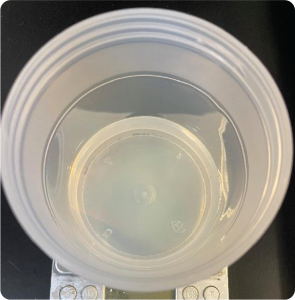

Until about fifteen years ago, DAC mixers like the Hauschild SpeedMixer® could mainly be found making mixing life easier in blue-chip R&D labs around the world. Known for its ultra-fast DAC mixing technology, perfectly repeatable results and zero clean-up after each use, the Hauschild SpeedMixer® has been a mainstay in the research and development industry.
Fast forward to today, where DAC mixing has leapt out of the lab and into the hands of “make your own” manufacturers everywhere. These small, nimble companies, making everything from boutique cosmetics to skateboard wheels to 3D printing materials, are using DAC mixers to bring innovative products to market faster.
“The applications where DAC mixers like Hauschild SpeedMixer® are being used as a manufacturing tool has grown exponentially,” says Shane Green, U.S. Regional Sales Director at Hauschild Engineering. “Certain chemistries are being made right now that if you don’t have DAC mixing technology, you’re out of that space.”
Last month, we wrote about scaling up to large-scale manufacturing with DAC mixing. While many of the benefits DAC mixers provide—speed, repeatability and cleanability—still apply, the rise of speedmixing in manufacturing has been borne out of two things: the continued need for mixing more challenging materials and the growth of on-demand mixing.
Whether it’s creating a product that has better conductivity or a higher strength composite graphite formulation, companies continue to innovate and improve what they’re bringing to market. The formulations required to create these products call for materials with increasingly unique properties. Because these components are often difficult to mix, the major raw materials producers began making formulations using DAC mixing technology. As the quality and complexity of materials continued to grow, the raw material producers began recommending DAC mixers in the manufacturing process.
While the rise of the DAC mixer in manufacturing has not been meteoric, it has been gaining momentum in recent years. As DAC mixers opened up new avenues to innovation in the lab, the end user buying the components continued to wrestle with processing them using conventional equipment. At the same time, more and more patents, whitepapers, and real-world applications were validating the unmatched effectiveness of DAC mixing technology.
“What has happened over the last ten to fifteen years is, manufacturing has caught up to the market,” says Shane. “The progressive manufacturers out there are now comfortable with investing in a DAC mixer like a Hauschild SpeedMixer® outside of the R&D lab because the ROI is proven to be there.”
Another reason for the DAC mixer boom is the need for on-demand mixing in niche product manufacturing. Products with non-standard colors, short shelf life or are slow sellers are looking to the DAC mixer as a way to be more agile in how they bring their products to market.
A good example comes from the dental industry, where there are sixteen shades of dental fillings. Of those, a few shades are rarely requested. So rather than those shades sitting on the shelf and expiring, they are made on-demand using DAC mixers.
Cosmetics is another example where DAC mixers have found a home. In many cosmetic products, the base material is the same. Because the pigment is the only variable, cosmetics companies are offering shades that are custom made to match a customer’s skin tone. DAC mixers play a major role in getting orders formulated and turned around quickly, with the mixing often being done right in the packaging.
Products with formulations that require material preparation such as certain 3D printing materials, are also benefitting from the DAC mixer. Sometimes in these instances, manufacturers need to prep their materials in separate dispensing cartridges to keep them out of contact until they are actually printing. The DAC mixer allows the materials to be mixed quickly, without air bubbles, in a perfectly repeatable process, allowing the manufacturer to guarantee a level of quality that other mixing technologies cannot match.
“3D printer manufacturers are recommending the Hauschild ® as the prep tool on site,” says Shane. “This type of manufacturing, the processing of materials on-site and on-demand, is where it’s all heading.”
According to Shane, the efficiency of processing materials in DAC mixers plays a big role in the adoption of DAC mixing technology as well.
“With conventional mixers, it normally takes gallons of materials and can take all day to process ” says Shane. “With a SpeedMixer, you use only the materials you need and you can do batch after batch quickly, with zero waste or clean up.”
With more products requiring DAC mixing technology in the manufacturing process and more manufacturers embracing speedmixing as a necessary part of their product development, the Hauschild SpeedMixer® is leading the way to better products and more innovation.
To learn more about Hauschild SpeedMixer® and its capabilities in “make your own” manufacturing, contact the Hauschild team today.